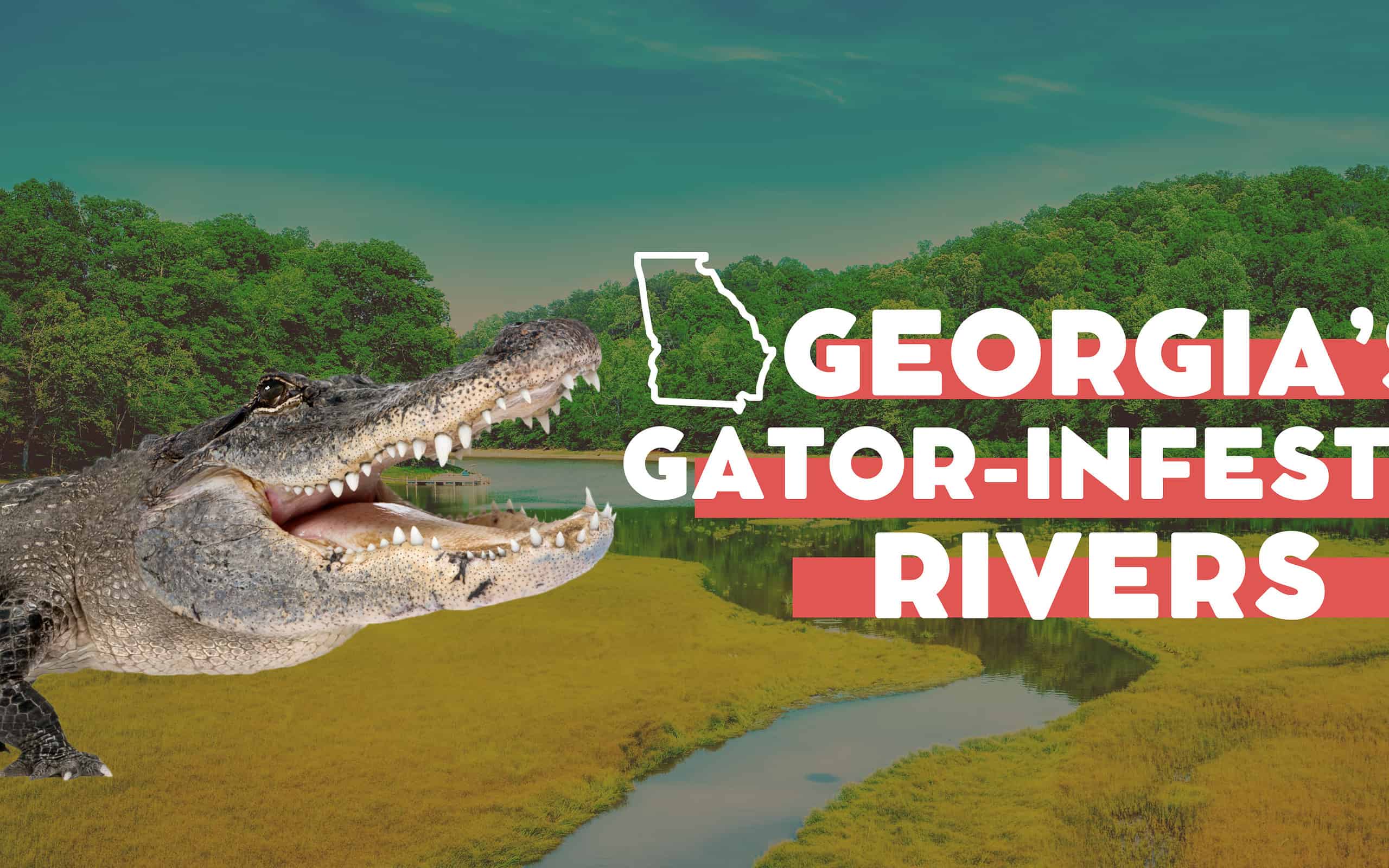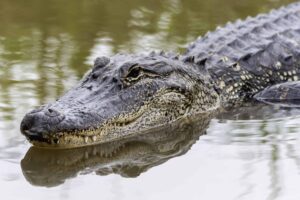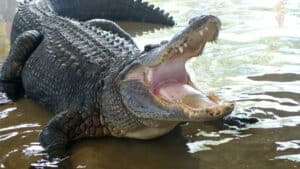Over 200,000 alligators inhabit Georgia’s swamps, marshes, and coastal regions. Georgia is divided by a natural boundary called the Fall Line, which runs roughly from Columbus through Macon to Augusta. Alligators are most commonly found south of the fall line, where the climate and temperature are more suited to their needs. Keep reading to discover the top six rivers in Georgia with the most alligators.

6. Oconee River

The Oconee River is home to several protected species.
©iStock.com/Ed Williams
Originating in Hall County, the Oconee River flows for around 200 miles before joining with the Ocmulgee to create the Altamaha River. The Oconee River is home to several protected species, including the Oconee burrowing crayfish, the robust redhorse, and the Altamaha arcmussel. Additionally, the Oconee River provides drinking water for over 280,000 people, including the City of Athens.
While alligators are more common in southern Georgia, there have been several documented sightings in recent years. In 2018, a hunter bagged an 11-foot, 600-pound alligator from the Oconee River near Toomsboro, Georgia. More recently, in 2023, a student at the University of Georgia in Athens reported spotting an alligator on a walking trail near the Oconee River.
5. Chattahoochee River
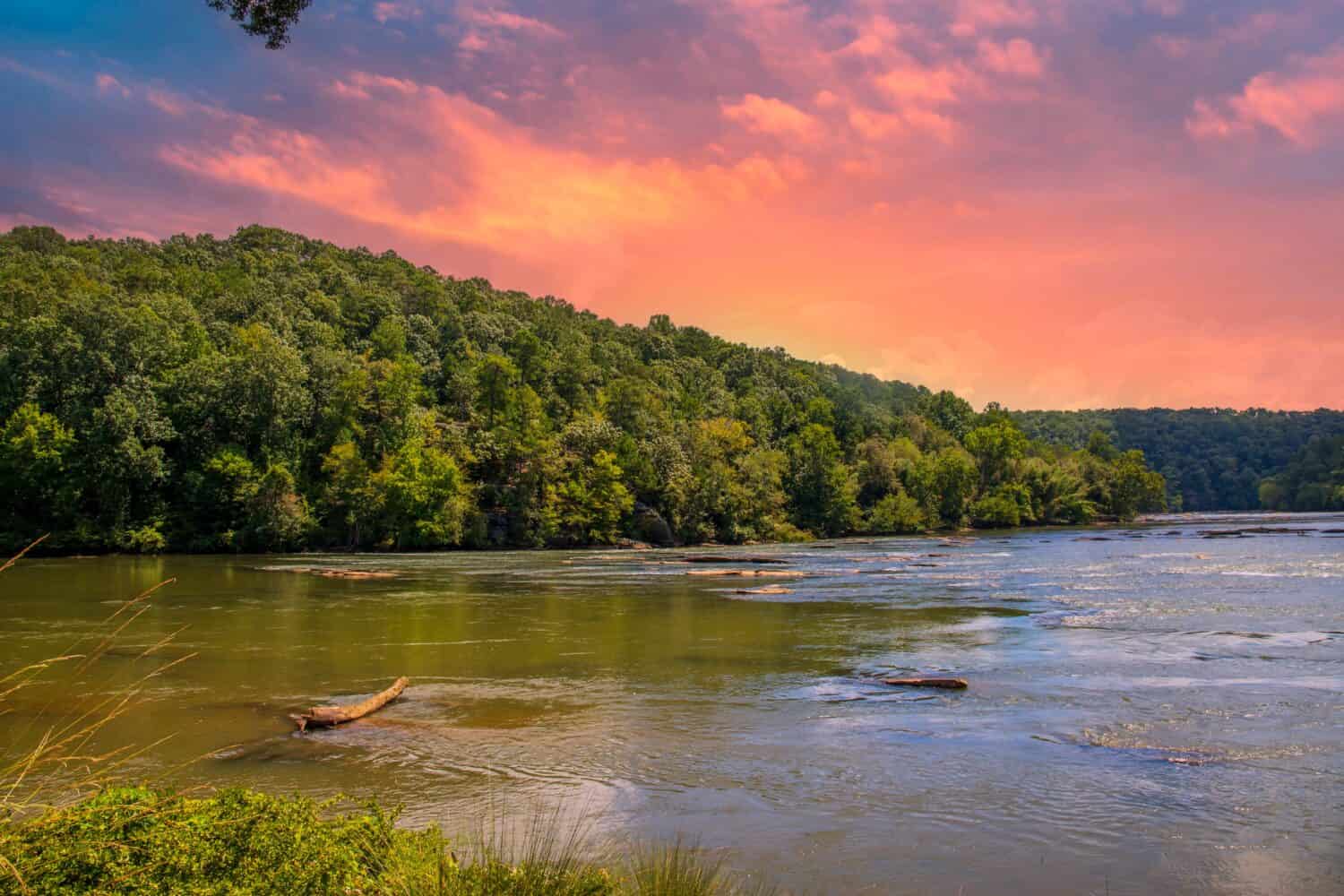
The Chattahoochee River supplies over 300 million gallons of drinking water to the metro Atlanta area each day.
©Marcus E Jones/Shutterstock.com
Stretching for over 400 miles, the Chattahoochee River originates in Union County in the Appalachian Mountains. It flows southwest, traversing the state’s fall line to empty into Lake Seminole on the Georgia-Florida border.
The Chattahoochee River has played a prominent role in the region’s history as a source of food, water, and trade. Researchers have documented over a dozen significant villages and settlements along the Chattahoochee that date back to 800-1600 A.D.
Alligators are known to live in the Chattahoochee south of the fall line, but alligator sightings have become more common in recent years around Columbus, which marks the geological boundary.
4. Altamaha River

The Nature Conservancy of Georgia considers the Altamaha River to be among “America’s Last Great Places.”
©SunflowerMomma/Shutterstock.com
Stretching for 137 miles, the Altamaha River is the East Coast’s largest free-flowing, unmodified river. Subsequently, the river’s basin is among the largest on the East Coast, with the Altamaha watershed providing drainage for nearly a quarter of the state.
The Altamaha River provides an important habitat for several animal species, from its headwaters in central Georgia to its mouth on the state’s southern coast. In 2017, research led by the Georgia Department of Natural Resources found that the river contained 100 species of reptiles and amphibians, including the American alligator.
In 2017, an 11-foot alligator was caught in the Altahama River in Brunswick, Georgia. The river’s habitats, which include sandhills and low-lying forests, are ideal for alligators, along with several varieties of snakes, toads, and lizards. The Altahamaha was declared endangered in 2002 due to reduced water flow. This reduction resulted from the development of power plants and man-made reservoirs along the river.
3. Ogeechee River

Alligators are only found in 10 U.S. states.
©Donyanedomam/iStock via Getty Images
This free-flowing river begins and ends within the state of Georgia. The headwaters of the Ogeechee River are located in the southeastern region of the Piedmont Province. From there, the river flows for 254 miles to reach the coast.
The Ogeechee River basin includes a significant amount of wetlands where cypress, tupelo, oak, and sweet gum trees grow. Additionally, the riverbanks create a habitat for rare plants like needle palm, pitcher plants, and witch-alder. The abundant biodiversity supports large numbers of deer, mink, otters, and beavers.
The Ogeechee River flows south of the state’s fall line, and there have been several documented sightings of alligators in the river. In 2016, hunters bagged a 12-foot alligator in the Ogeechee River near Richmond Hill. In 2020 in Wrens, a 5-foot alligator led local law enforcement on a chase until first responders relocated the gator into the Ogeeche.
2. Suwanee and St. Marys Rivers
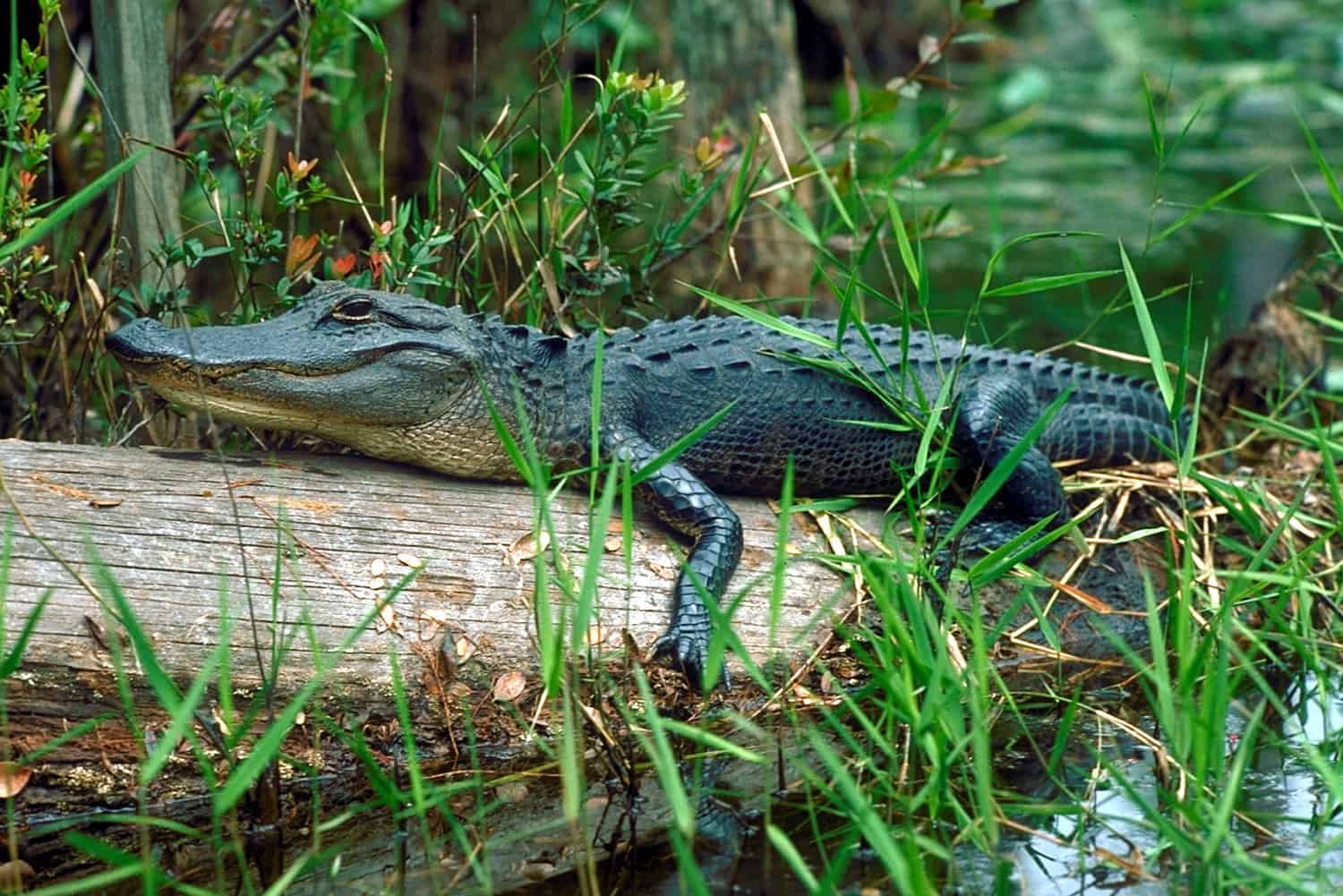
The Suwanee and St. Mary’s Rivers both originate in the Okefenokee Swamp.
©Jonas N. Jordan, U.S. Army Corps of Engineers, Public domain, via Wikimedia Commons - Original / License
The headwaters of both the Suwanee and St. Marys Rivers are located within Georgia’s Okefenokee Swamp. The St. Mary’s River creates the boundary between Florida and Georgia. Meanwhile, the Suwanee River flows southwest from the Okefenokee through Florida to empty into the Gulf of Mexico.
Established as a wildlife refuge in 1937, the Okefenokee Swamp stretches for over 400,000 acres, making it one of the largest freshwater ecosystems on the planet. The swamp provides a habitat for over 600 plant species, including several threatened or endangered.
The Okefenokee Swamp also provides a habitat for around 10,000 alligators, which thrive in the swamp’s lakes, marshes, and cypress forests. Alligator sightings are not uncommon in the area. In 2022, authorities had to relocate a 5-foot alligator from the front porch of a home in Kingsland to the nearby St. Marys River.
1. Savannah River

According to the Nature Conservancy of Georgia, the Savannah River’s biodiversity rivals that of a rainforest in South America.
©iStock.com/Allen Allnoch
The Savannah River flows from its headwaters near Hartwell southeast to Savannah to empty into the Atlantic Ocean. The river creates the border between South Carolina and Georgia. Additionally, it provides a habitat for more than 70 rare species of animals and plants, including 13 endangered species.
Alligators are so abundant in the Savannah River that researchers with the Savannah River Ecology Laboratory (SREL) have studied them for over three decades. Scientists have studied the alligators’ distribution, genetic patterns, reproduction, and more. Currently, researchers are focused on the impact that environmental contaminants have on alligators and other reptiles with long lives.
Researchers discovered that alligators have complex mating rituals. Male alligators “bellow” and produce other vocalizations to attract female alligators. In addition, researchers have observed alligators blowing bubbles, posturing, and head-slapping in order to attract a mate.
Summary of Georgia Rivers with the Most Alligators
| Rank | River |
|---|---|
| #1 | Savannah River |
| #2 | Suwanee and St. Mary’s Rivers |
| #3 | Ogeechee River |
| #4 | Altamaha River |
| #5 | Chattahoochee River |
| #6 | Oconee River |
Thank you for reading! Have some feedback for us? Contact the AZ Animals editorial team.

